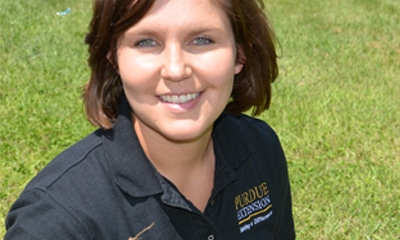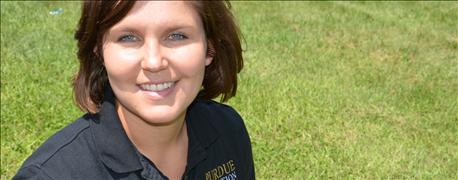
Both farmers who already use cover crops and those wanting to try them ask lots of questions. They also seek as much information as is out there related to which cover crops to plant, when to plant them and even how to plant them. A quick search shows there’s already a reasonable amount of information available. Anna Morrow’s job is to pull that information into one location and into the most usable form possible. She recently became the first program manager for the Midwest Cover Crops Council. She sat down with Indiana Prairie Farmer to explain her new role.
IPF: What is the Midwest Cover Crops Council?

COVER CROPS PROMOTER: Anna Morrow is the first program manager for the Midwest Cover Crops Council. She will focus on modernizing the website and developing more information to help farmers.
Morrow: The Midwest Cover Crops Council was founded in 2006 for the express purpose of increasing interest in cover crops and cover crop acreage across the Midwest. A board of directors is responsible for MCCC, and there are 12 member states plus Ontario in Canada. MCCC works closely with the Sustainable Agriculture Research and Education effort.
IPF: What states are involved in this effort?
Morrow: The MCCC member states include Indiana, Ohio, Illinois, Michigan, Minnesota, Wisconsin, Iowa, Missouri, North Dakota, South Dakota, Kansas and Nebraska, plus the province of Ontario. There is one director from each state and province, plus four directors at large. Indiana is represented by Eileen Kladivko, Purdue University Extension cover crops specialist. Barry Fisher with the Natural Resources Conservation Service is based in Indiana and is also on the board.
IPF: As the first program manager, what are your duties?
Morrow: MCCC has a website: mccc.msu.edu. One of my tasks is to improve the website, making it more user-friendly. There is information specific to each state and province on the website, and that will continue. In some of the states you can even get down to information on frost dates for various potential cover crops on a county-by-county basis.
IPF: What other major projects are underway?
Morrow: There is currently a decision-making tool on the website that allows you to enter your own information, and get useful information back on which cover crops might be best-suited for your situation. Frost-seeding dates are used as background information in the website tool to calculate seeding dates. We are promoting that tool, hoping farmers will take advantage of it before choosing and seeding cover crops this year. (Learn more about the Cover Crop Decision Tool in this related story.)
IPF: What is coming in the future?
Morrow: We are working on a seeding mix calculator and will be adding it on the website when it is finished. It will focus on how many pounds per acre you need if you choose various cover crop mixes.
We’re also working on a phone app version of the Cover Crops Field Guide, which is available in print form now.
IPF: How can a farmer get the printed form of the Cover Crops Field Guide?
Morrow: Visit the website for more details. You can order copies directly at the-education-store.com, or by calling 888-EXT-INFO.
About the Author(s)
You May Also Like




